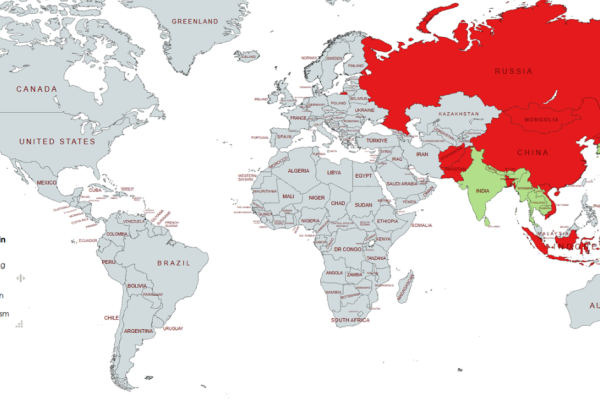Tibetan Buddhism, also known as Vajrayana Buddhism, is a unique and intricate form of Buddhism that combines elements of Mahayana Buddhism with various tantric and shamanistic practices native to the Himalayan region. It is widely practiced in Tibet, Bhutan, Nepal, India, Mongolia, and parts of Russia. Tibetan Buddhism is renowned for its rich rituals, profound philosophical texts, and an emphasis on the path to enlightenment through both wisdom and compassion. Core Beliefs and Practices 1. The Four Noble Truths and the Eightfold PathLike all Buddhist traditions, Tibetan Buddhism is rooted in the Four Noble Truths and the Eightfold Path. These foundational teachings outline the nature of suffering, its causes, the possibility of cessation, and the path leading to the cessation of suffering. 2. The Bodhisattva IdealTibetan Buddhism places a strong emphasis on the bodhisattva path, wherein practitioners aspire to achieve enlightenment not just for themselves but for the benefit of all sentient beings. This involves cultivating qualities such as compassion (karuna) and loving-kindness (metta). Tantric Practices One of the defining features of Tibetan Buddhism is its extensive use of tantra, which includes advanced meditation techniques, rituals, and esoteric practices. Tantric practices aim to transform ordinary experiences into opportunities for spiritual growth. Key elements include: The Role of Lamas and Tulkus Lamas: Tibetan Buddhism places great importance on spiritual teachers known as lamas. They provide guidance, perform rituals, and transmit teachings. The most renowned lama is the Dalai Lama, considered the spiritual leader of Tibetan Buddhism. Tulkus: Another unique aspect of Tibetan Buddhism is the belief in tulkus, or reincarnated lamas. High-ranking lamas, upon their death, are believed to reincarnate and are sought out through a meticulous process. The Dalai Lama and the Panchen Lama are among the most famous tulkus. Rituals and Festivals Tibetan Buddhism is rich in cultural and religious festivals that reflect its spiritual beliefs and practices. These festivals often involve elaborate rituals, prayers, dances, and communal activities that mark significant events in the Buddhist calendar. Here are some key Tibetan Buddhist festivals: Losar (Tibetan New Year) Losar is the most significant festival in Tibetan Buddhism, celebrating the Tibetan New Year. It usually falls in February or March and lasts for 15 days, with the first three days being the most important. The festival involves various customs such as cleaning homes, preparing special foods, performing rituals to drive away evil spirits, and visiting monasteries to offer prayers and receive blessings. 2. Monlam (The Great Prayer Festival) Monlam Chenmo is one of the grandest festivals, established by Tsongkhapa, the founder of the Gelug school of Tibetan Buddhism. Held in the first month of the Tibetan calendar, Monlam includes extensive prayer sessions, teachings, and debates by monks, aiming for world peace and spiritual prosperity. The festival culminates with rituals and public displays of intricate butter sculptures called torma. 3. Saga Dawa Saga Dawa is the celebration of the Buddha’s birth, enlightenment, and parinirvana (passing away). It occurs on the full moon day of the fourth lunar month. Buddhists engage in various meritorious activities, such as fasting, reciting sutras, making offerings, and releasing animals. Pilgrims visit sacred sites, including Mount Kailash, to perform circumambulations and offer prayers. 4. Chotrul Duchen (Festival of Butter Lamps) Chotrul Duchen, also known as the Festival of Butter Lamps, takes place on the 15th day of the first month of the Tibetan calendar. It commemorates the Buddha’s performance of miracles to increase the faith of his disciples. Monasteries and homes are illuminated with thousands of butter lamps, symbolizing the light of wisdom dispelling the darkness of ignorance. 5. Lhabab Duchen Lhabab Duchen celebrates the Buddha’s descent from the Tushita heaven back to Earth, after teaching his mother and other celestial beings. This festival is observed on the 22nd day of the ninth lunar month. It involves making offerings, lighting lamps, and performing various rituals to honor the Buddha’s return and spread of his teachings. 6. Ganden Ngamchoe Ganden Ngamchoe marks the death anniversary of Je Tsongkhapa, the founder of the Gelug tradition. Celebrated on the 25th day of the 10th lunar month, the festival includes lamp offerings, prayers, and the recitation of Tsongkhapa’s works. Monks and laypeople gather to honor his contributions to Tibetan Buddhism. 7. Dzamling Chisang (Universal Prayer Day) Dzamling Chisang is a festival of universal prayer and offerings, held on the 15th day of the fifth lunar month. It commemorates the great saint Guru Rinpoche’s subjugation of negative forces and establishment of Buddhism in Tibet. Pilgrims visit sacred sites, make offerings, and perform rituals to invoke the blessings of Guru Rinpoche. 8. Shoton Festival (Yogurt Festival) Shoton Festival originally began as a monastic retreat during which monks consumed only yogurt. Today, it is a major cultural event held in Lhasa, involving Tibetan opera performances, music, and dance. The festival starts on the 30th day of the sixth lunar month with the unfurling of a giant thangka (religious painting) at Drepung Monastery, followed by festivities at Norbulingka Palace. 9. Thangka Unveiling Ceremony Several festivals feature the unveiling of giant thangkas (religious paintings), which are displayed to convey blessings and teachings. Notable ceremonies include those during the Monlam Great Prayer Festival and the Shoton Festival. These events draw large crowds of pilgrims and tourists who come to view the thangkas and participate in the associated rituals. 10. Palden Lhamo Festival Palden Lhamo Festival is dedicated to Palden Lhamo, a fierce female protector deity of Tibetan Buddhism. Celebrated on the 15th day of the ninth lunar month, the festival includes rituals and prayers to invoke her protection and blessings. Monasteries hold special ceremonies, and devotees offer prayers and perform rituals to honor her. Tibetan Buddhist festivals are vibrant expressions of spiritual devotion, community solidarity, and cultural heritage. They provide opportunities for practitioners to accumulate merit, deepen their practice, and celebrate the teachings of Buddhism. These festivals, marked by elaborate rituals, prayers, and communal activities, play a crucial role in preserving and promoting the rich traditions of Tibetan Buddhism. Essential Books to Understand Tibetan Buddhism These…










